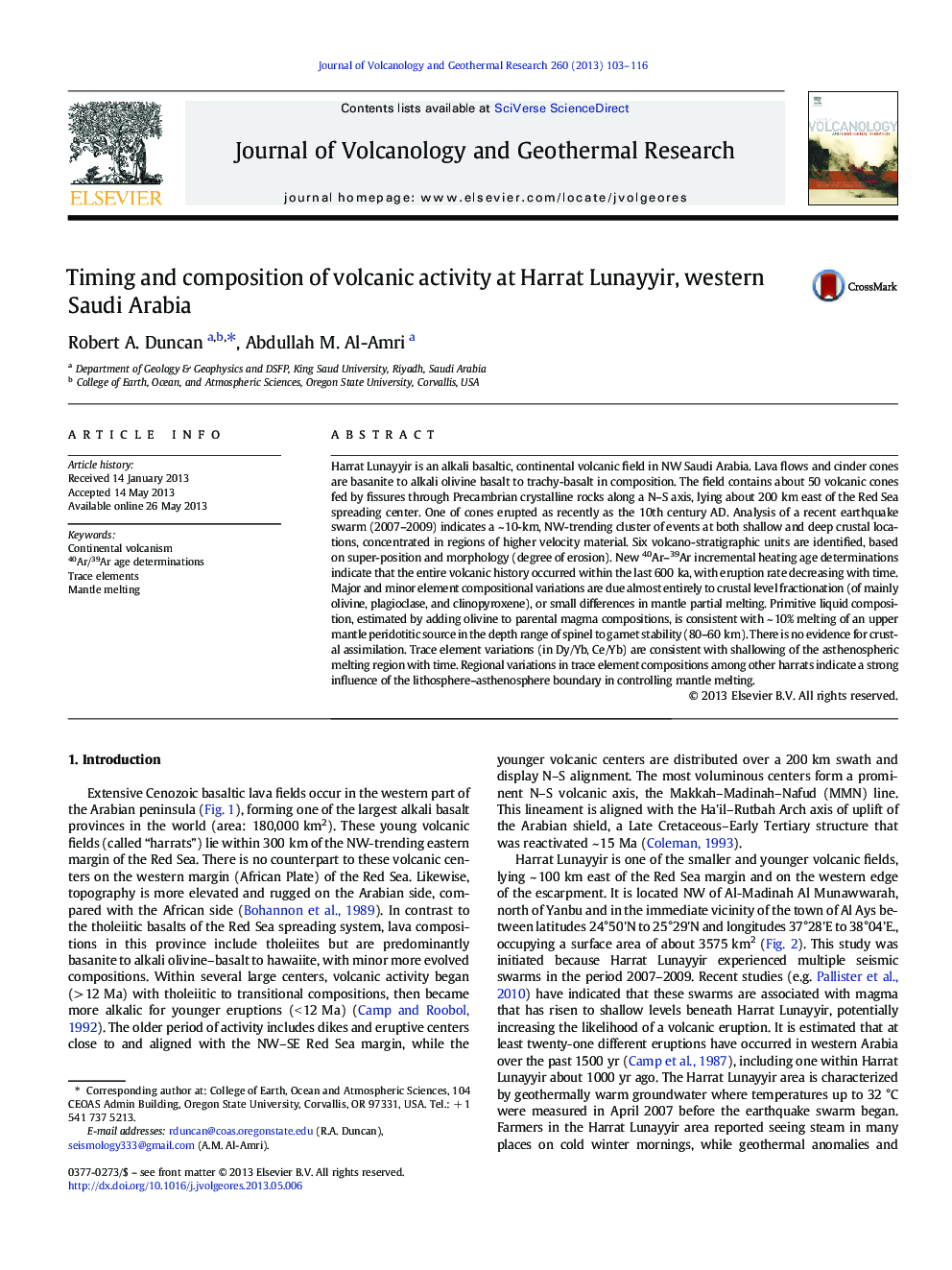| Article ID | Journal | Published Year | Pages | File Type |
|---|---|---|---|---|
| 6440138 | Journal of Volcanology and Geothermal Research | 2013 | 14 Pages |
Abstract
Harrat Lunayyir is an alkali basaltic, continental volcanic field in NW Saudi Arabia. Lava flows and cinder cones are basanite to alkali olivine basalt to trachy-basalt in composition. The field contains about 50 volcanic cones fed by fissures through Precambrian crystalline rocks along a N-S axis, lying about 200Â km east of the Red Sea spreading center. One of cones erupted as recently as the 10th century AD. Analysis of a recent earthquake swarm (2007-2009) indicates a ~Â 10-km, NW-trending cluster of events at both shallow and deep crustal locations, concentrated in regions of higher velocity material. Six volcano-stratigraphic units are identified, based on super-position and morphology (degree of erosion). New 40Ar-39Ar incremental heating age determinations indicate that the entire volcanic history occurred within the last 600Â ka, with eruption rate decreasing with time. Major and minor element compositional variations are due almost entirely to crustal level fractionation (of mainly olivine, plagioclase, and clinopyroxene), or small differences in mantle partial melting. Primitive liquid composition, estimated by adding olivine to parental magma compositions, is consistent with ~Â 10% melting of an upper mantle peridotitic source in the depth range of spinel to garnet stability (80-60Â km). There is no evidence for crustal assimilation. Trace element variations (in Dy/Yb, Ce/Yb) are consistent with shallowing of the asthenospheric melting region with time. Regional variations in trace element compositions among other harrats indicate a strong influence of the lithosphere-asthenosphere boundary in controlling mantle melting.
Related Topics
Physical Sciences and Engineering
Earth and Planetary Sciences
Geochemistry and Petrology
Authors
Robert A. Duncan, Abdullah M. Al-Amri,
